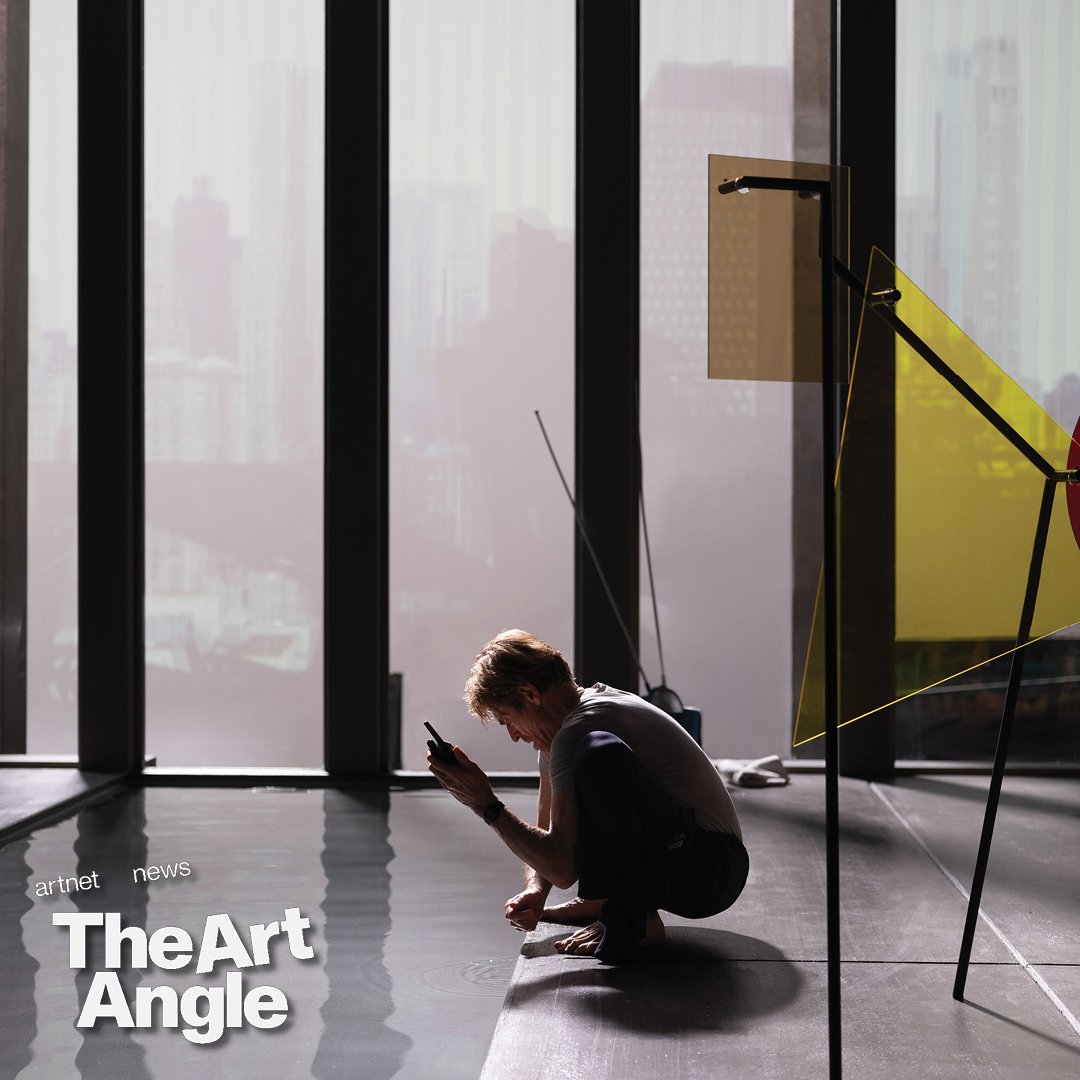
Welcome to the Art Angle, a podcast from Artnet News that delves into the places where the art world meets the real world, bringing each week’s biggest story down to earth. Join us every week for an in-depth look at what matters most in museums, the art market, and much more, with input from our own writers and editors, as well as artists, curators, and other top experts in the field.
In a new feature film called Inside, an art heist goes terribly wrong for a thief named Nemo.
Nemo is played by the world-renowned actor Willem DaFoe, well-loved by the art world already for his performance in the 2018 film At Eternity’s Gate, where he played Vincent van Gogh.
In the ultra-contemporary plot of Inside, Dafoe’s character Nemo is not a world famous artist, he is a rather anonymous robber whos after a self-portrait by Egon Schiele. The artwork is not where it is supposed to be inside the ultra-modern penthouse he’s just broken into. Carefully laid plans seem to be going awry. Precious minutes are lost. Then, the alarm system locks down, leaving Nemo sealed off from the world while in the center of Manhattan. If you haven’t seen Inside yet, be advised that there are spoilers scattered throughout this episode.
So, Nemo is now stuck in a resplendent box of glass, steel, and concrete, with little more than some exotic fish, luxury furniture, and a multimillion dollar art collection. On-screen alone for practically the entire film, DaFoe’s character begins to battle against the degradation of his body and spirit—to deal with the latter, the artworks in the apartment become something like a central character, as does Nemo’s own blossoming creativity.
The artworks in the apartment, which were carefully curated, drive the plot and deepen the themes. There is a 1999 work by Maurizio Cattelan, a large photograph of a man taped to the wall with tons of duct tape, sarcastically titled A Perfect Day. There is also David Horvitz’s 2019 neon that hangs over the character’s struggle, with a sort of torturous prescience: it says “All the time that will come after this moment.” To build out the idea of a real art collection, there are more emerging stars. Kosovan artists Petrit Halilaj and Shkurte Halilaj’s work for the 2017 Venice Biennale is worn by Nemo when the penthouse’s temperature drops. And a video work by Julian Charrière and Julius von Bismarck from 2016, which was filmed at the exclusion zone surrounding the Chernobyl Nuclear Power Plant, is among the artworks in the film that conjure questions around humanity, planetary survival, and climate crisis—which is an undercurrent theme of the movie.
On this week’s episode, European editor Kate Brown speaks to the film’s director Vasilis Katsoupis and art curator Leonardo Bigazzi about this captivating and claustrophobic feature, which had its world premiere at the Berlinale film festival last month and is about to hit theaters in the United States.
Listen to more episodes:
The Art Angle Podcast: The Triumphant, Tragic Life of Nazi-Era Artist Charlotte Salomon
The Art Angle Podcast: Hito Steyerl on Why the Metaverse Has Already Failed
The Art Angle Presents: How Three Artists Envision What a Goddess Means Today
The Art Angle Podcast: Hilma af Klint Pioneered Abstract Art. But That Is Only Part of Her Story
The Art Angle Podcast: What Is Afrofuturism, and Why Is It So Relevant Today?
The Art Angle Podcast: Marc Spiegler on the Evolution of the Art Business (and Life After Art Basel)
The Art Angle Podcast: Pussy Riot’s Nadya Tolokonnikova on Art, Activism, and Vladimir Putin
The Art Angle Podcast: What Can the Art World Learn From an Occult Practitioner?